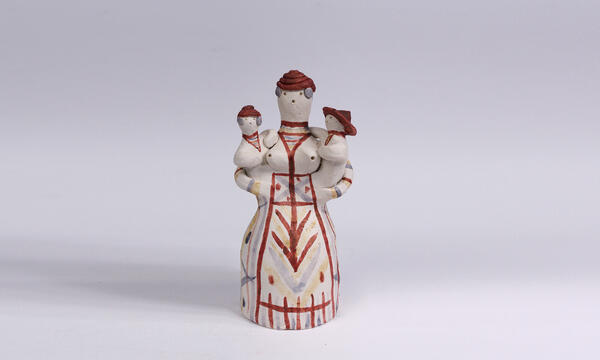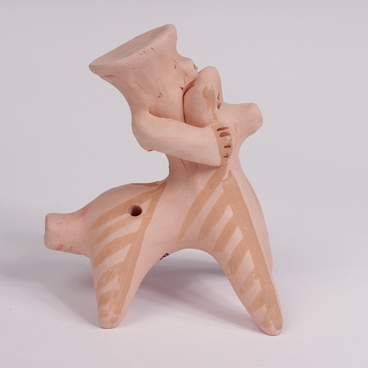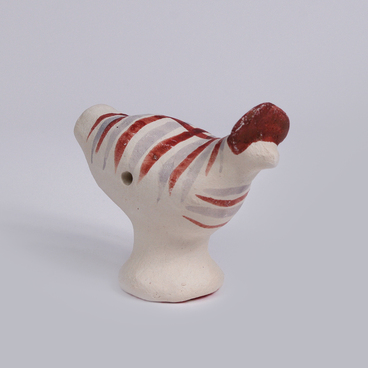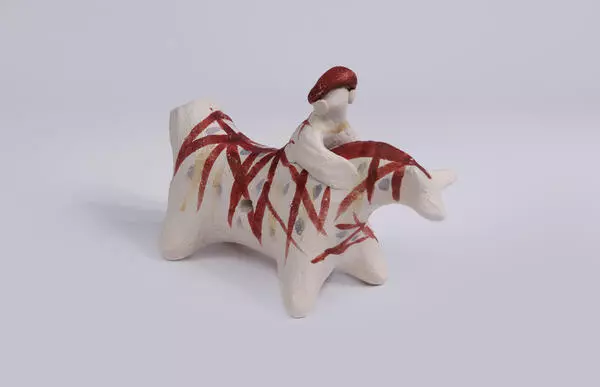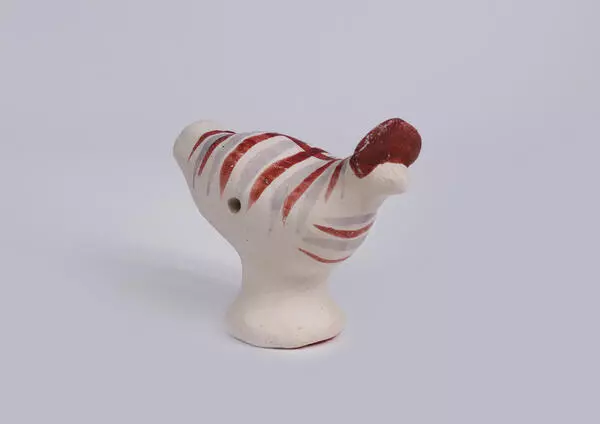This toy was made by a craftswoman Natalia Frolova in 2013. She created a figurine depicting a mother with two children — a traditional motif for Chernishino clay toys. The craftswoman outlined the body curves, which corresponds to the craft’s tradition of depicting women as the goddess of fertility. The costume’s painting is also performed in the Chernishino style and resembles cuckoo’s feathers — the craftswomen’s favorite bird. To make the work more authentic, Natalya Frolova painted the figurine not with acrylics or watercolors, but with aniline paints that had been used long ago.
One of the 20th-century craftswomen, Elena Shelyaeva said the following about such mother figurines,
One of the 20th-century craftswomen, Elena Shelyaeva said the following about such mother figurines,
